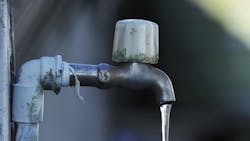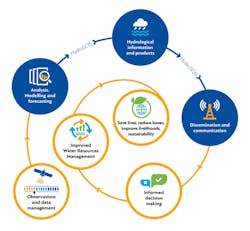WMO to launch global water cycle monitoring service
A global initiative led by the World Meteorological Organization (WMO) and coordinated by the UK Centre for Ecology & Hydrology (UKCEH) hopes to enable communities across the world adapt to the changing water cycle.
The Hydrological Status and Outlook System (HydroSOS) will provide regular data on the status of water resources — including groundwater levels, river flows, reservoirs, lakes, and soil moisture — in local catchments across the world. It will also assess whether these conditions are normal for the time of year and predict whether the situation is likely to get better or worse over coming weeks and months.
When the system is operational, this detailed information will be distributed by National Hydrological and Meteorological Services (NHMSs) to key sectors such as central and local government, water and energy companies, agriculture, and industry on at least a monthly basis. HydroSOS could provide an early warning of forthcoming water shortages and flooding, thereby supporting public water and energy supplies, guiding farming practices, and helping countries prepare for natural disasters.
WMO has approved the development of HydroSOS following a five-year pilot project led by UKCEH. This scoped the requirements for the system, drew up guidelines for consistent reporting of hydrological conditions and established that there was sufficient international interest in the initiative.
WMO estimates there may be a 40 percent gap between global water supply and demand by 2030. Other experts have estimated drought costs up to $8 billion a year from losses in agricultural and related businesses, and damage from flooding is $80 billion a year.
“HydroSOS will increase communities’ resilience to the impacts of climate change by improving water and food security as well as reducing poverty,” said Elena Manaenkova, Deputy Secretary-General of WMO. “Therefore, it is a key initiative in accelerating global progress towards several UN Sustainable Development Goals, particularly SDG6: Clean Water and Sanitation for All.”
A key feature of the system will be the way in which it supports the development of scientific capacity within hydrological and meteorological organizations around the world, helping these agencies to generate and share high-quality information about their water resources.
Scientists and funders across the world who are interested in being part of HydroSOS are now being asked to come forward and collaborate to enhance global capacity to monitor, predict, and report water-related information for their respective countries and regions.
HydroSOS will provide interested WMO Members with equipment to measure and report water data. The hydrological information gathered will help reduce economic losses and deaths due to droughts and floods.

